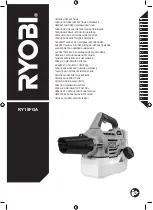
Positive Interlock
The positive interlock prevents the levering-in crank from
being engaged if the circuit breaker is closed in the
CONNECTED position.
Negative Interlock
The negative interlock prevents the circuit breaker from
closing between the CONNECTED and TEST positions.
Position Closing Interlock
The circuit breaker is prevented from closing automatically
when it is moved from the TEST to the CON NECTED
position if the closing switch is maintained during the
levering-in operation.
Position Withdrawal Interlock
This interlock prevents the circuit breaker from being
withdrawn by pulling unless it is in the TEST position.
Extension Rail Interlock
The extension rail interlock prevents the circuit breaker
from being withdrawn out of its compartment unless the
extension rails are properly engaged to the fixed rails.
The correct operation of provided interlocks should be
confirmed. Keep in mind that an interfacing check is made
with a compatible structure. As such, the instructions
provided here may overlap with the instructions provided
with the assembly. In any case, all provided interlocks
should be confirmed. Review paragraph 4-6.1 before
proceeding if additional instructions are needed on
insertion and removal of a circuit breaker.
At the conclusion of the operations check as described in
paragraph 4-6.2, the circuit breaker was closed in the TEST
position with its springs charged. Engage the levering-in
crank. The circuit breaker will automatically trip and MOC
switches will operate if the circuit breaker compartment is
equipped with MOC switches designed to operate in the
TEST position.
Lever the circuit breaker towards the CONNECTED
position. As the circuit breaker moves, protective
compartment shutters will automatically begin to open
uncovering fixed primary contacts. TOC switches will also
operate once the CONNECTED position is reached, if TOC
switches are provided in the structure. Remove the
levering-in crank at this point.
Close the circuit breaker. Any provided MOC switches will
operate and the motor closing springs will charge if control
power is available.
Attempt to lift the circuit breaker lift/pull handle to pull the
circuit breaker out. The position withdrawal interlock will
prevent lifting the handle high enough to disengage the
levering latch from the nut. This prevents the circuit
breaker from being pulled out.
Attempt to close the circuit breaker by pushing the manual
close button. The circuit breaker will go trip free (springs
discharge but circuit breaker will not close). Lever the
circuit breaker to the TEST position. The secondary
contacts will disengage automatically.
Engage the secondary contacts by pulling them forward as
far as possible. Close the circuit breaker. The motor will
start charging the springs automatically.
Engage the secondary contacts by pulling them forward as
far as possible. Close the circuit breaker. The motor will
start charging the springs automatically.
Remove the extension rails. Disengage the levering latch
by lifting the handle on the circuit breaker and attempt to pull
the circuit breaker out. The circuit breaker will not move out
more than two inches beyond the TEST position. Push the
circuit breaker back to the TEST position. Engage the
extension rails. Once again disengage the levering latch
and pull the circuit breaker out. The circuit breaker will trip,
close and trip as it comes out on to the extension rails from
the TEST position.
NOTICE
The interface checks outlined in this manual and the
manual provided with the assembly structure are
intended to verify safe and proper operation. If
observed conditions are not as described, contact
Eaton for assistance.
















































